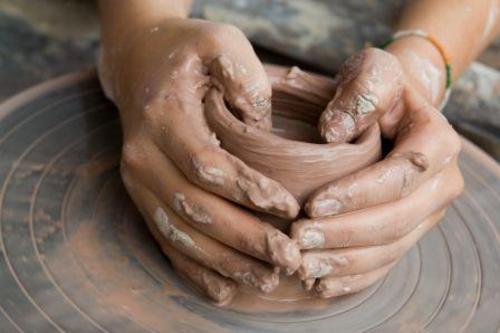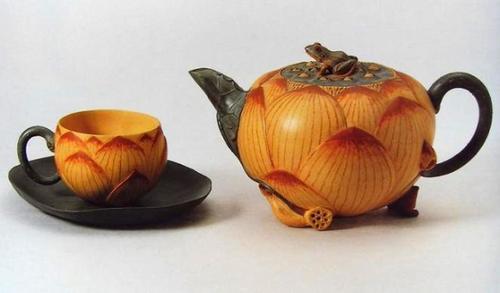Pottery The invention of the potter's wheel was a technological leap. Bronze Age potters (circa 3000 B.C) used a slow wheel, a platform that let them move pots while working. A century later came the fast wheel that spun on its axle, allowing the potter to draw out pots from lumps of clay, a vastly speedier process. |  |
 | Over time, these basic methods grew more refined and efficient. Potters from different cultures added decorative processes to pottery, transforming this humble craft into an art. Shaping Pottery Pottery Types |
| Stoneware is hardier, being fired at higher temperatures. It is more opaque and typically comes in muted tones of grey-brown. Porcelain, made with kaolin (a white clay), was first developed in ancient China and is valued for its lustre and delicate looks. Decorating Pottery Pottery is decorated with varied techniques, etching designs, glazing, burnishing and adding colourants. Additives impart different textures to pottery. Famous Potters Wedgwood and Coalport are internationally renowned pottery manufacturers. The Adams family were famous potters from 18th century England, whose designs are now recreated by Wedgwood. Native American potter Maria Martinez popularised traditional Pueblo-style pottery. Tatsuzo Shimaoka from Japan was famed for his innovations on traditional Japanese styles. |  |
| Pottery Trademarks Trademarks etched on the bottom of pottery items are used to identify their creator, date of manufacture and place of origin. Books on pottery trademarks help collectors hunting for rare and valuable pottery collectables. Time perhaps, to take a close look at your grandmother's porcelain tea-set in the attic? | |